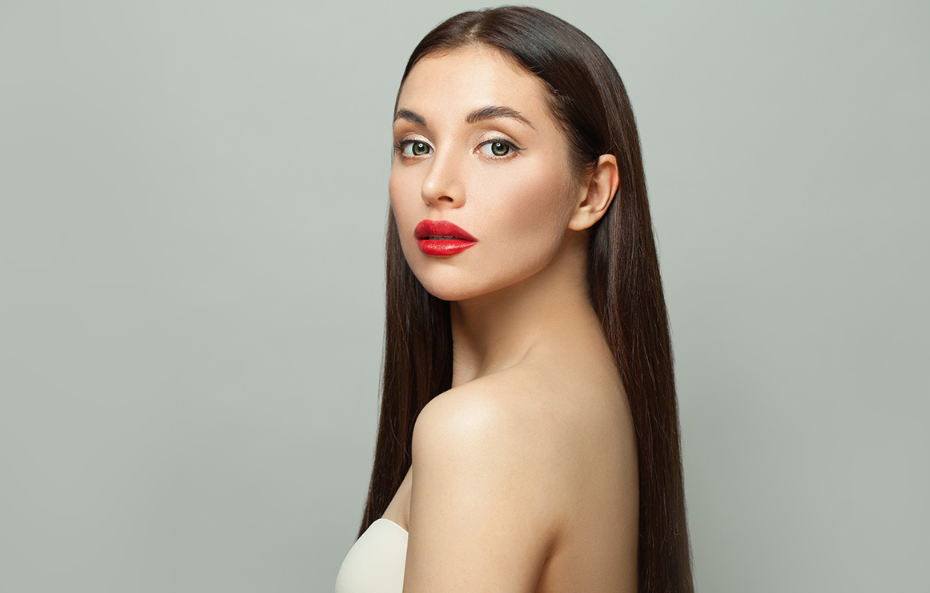Are you aware that different hair types grow in different parts of your body? If you look closely, even the body areas that look hairless to you, like the forehead or earlobe, have tiny hairs. These tiny hairs are called vellus hair. Vellus hair is also referred to as baby hair or peach fuzz and is translucent and undoubtedly thinner than hairs on your other body parts. You can find these tiny hairs on your eyelids and nose. However, vellus hairs don’t grow on the palms of the hands or soles of the feet. Also, note that in comparison to adults, children have more vellus hair. Even though vellus hairs may look unnecessary to you, they have distinct purposes in your body, and they help sweat evaporate from your body and regulate your body temperature.
Difference Between Vellus and Terminal Hair?
The long, thick, pigmented hair on the scalp, armpits, face, and pubic region is called terminal hair. Hair follicles are situated all over the body, and they contain blood vessels, stem cells, sebaceous glands, and hair. The hair follicle lies within the skin’s second layer, called the dermis. For males, terminal hair growth happens faster than females. They have terminal hairs on various body parts, including the chest, back, face, hands, legs, arms, and feet. On the other hand, vellus hair is fine, delicate hair covering most body parts. It develops in childhood and persists on much of the body throughout adulthood. Terminal hair has a different structure than vellus hair, and it’s longer and stronger. A young guy, for example, may have vellus hair on his chin, face, and above his lip before puberty. As puberty progresses, these hairs transform into terminal hair, becoming longer, thicker, and stronger. This is when men grow facial hair, such as a mustache or beard. See Also: Can I Still Have Laser Skin Treatment If I Have Sensitive Skin?
Vellus Hair Transformation
Hair growth is one of the major changes that happen in puberty. On average puberty in boys begins at around 12. Girls start puberty at an average age of 11. The vellus hair, which is originally light and smooth, turns coarse, dark, and long during this transformation. During the early stages of puberty, vellus hair transforms into terminal hair, and it is usually concentrated around the pubic area in both boys and girls. Also, females usually retain more vellus hair than males, but hormonal changes can cause vellus hair to turn into terminal hair, such as when they get pregnant. However, this hair sheds once the baby is born and the hormone levels are back to normal.
Vellus Hair Conditions
Sometimes certain people may develop abnormal vellus hair growth. This condition develops due to three diseases: Cushing’s syndrome, anorexia nervosa, and male pattern baldness. Let’s see how these diseases cause abnormal vellus hair growth. Cortisol is your body’s main stress hormone. When cortisol levels in your bloodstream become very high, it leads to Cushing’s syndrome, which can cause abnormal growth of vellus hair. Cushing syndrome can happen either because your body is producing too much cortisol or if you are using drugs that contain cortisol. Another condition that leads to an increase in vellus hair is anorexia nervosa. It is an eating disorder usually indicated by self-starvation, body dysmorphia, and drastic weight loss. Patients suffering from anorexia nervosa may find it very difficult to maintain their weight at a point that is healthy for people of the same height or age. See Also: Coolsculpting Vs. Liposuction – Which Procedure Is More Effective? The third and most common reason that causes an increase in vellus hair is male pattern baldness. As the name suggests, this condition follows a unique pattern of hair loss. The hair loss usually begins at the temples or crown of the head. Initially, hair thinning happens, and bald patches begin to appear on your scalp over the years. The main cause of male pattern baldness is the hormonal influence of androgens on hair follicles. This often reverses scalp hair from terminal to vellus hair, increasing the volume of vellus hair on your scalp.



